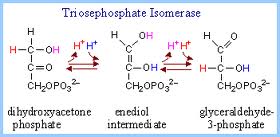Whitehouse CR, Boullata J, McCauley LA. 23 JUN 2008. ‘The potential toxicity of artificial sweeteners.’Accessed 12th April 2013 http://www.ncbi.nlm.nih.gov/pubmed/18604921


There has been a lot of talk about artificial sweeteners, in the past and even today. Some people swear by it and others don’t. This article goes into a lot of details about the different type of sweeteners, its uses and chemistry and its potential effects on health.
The main idea about artificial sweeteners is that they provide the sweetness of natural sugars without the calories. Since everyone nowadays is limiting their daily calorie intake, they often turn to these artificial sweeteners to avoid the extra calories. But is this really the way to go?
There are classes of artificial sweeteners, nutritive and non-nutritive. The nutritive sweeteners include the monosaccharide polyols (e.g., sorbitol, mannitol, and xylitol) and the disaccharide polyols (e.g., maltitol and lactitol). The non-nutritive sweeteners, better known as artificial sweeteners, include substances from several different chemical classes that interact with taste receptors and typically exceed the sweetness of sucrose by a factor of 30 to 13,000 times . Artificial sweeteners are found in a wide range of products such as soft drinks, juices, jams, jellies and desserts.
The history, chemistry and metabolism, and toxicology, of saccharin, aspartame, acesulfame-K, sucralose and neotame, all common substances that make up artificial sweeteners, were provided in a detailed account throughout the article. The main idea from all this being, that there has been extensive research about the effects of these substances on human health and evidence that suggest that they are associated with health conditions such as cancers, migraines and low birth weights.
There are a lot of controversy surrounding artificial sweeteners since some research scientists believe that since the compound found in artificial sweeteners are not metabolized by the body they possess no health risks since they are simply excreted as wastes products.
The average daily intake, ADI is defined as an intake that “individuals in a (sub) population may be exposed to daily over their lifetimes without appreciable health risk”, (WHO. 2004). In the USA, aspartame has the highest ADI of 50mg/kg/d, but this value may be subjected to change based on new research discoveries about its health implications.
Diabetics, children, pregnant women, women of childbearing age, breastfeeding mothers, are all populations susceptible to the negative effects of these artificial sweeteners.
Controversy also arises among individuals who are on low calorie diets, who tend to use these sweeteners in their diets. These individual should be warned about the risks and benefits of these substances, and also should be educated about healthy eating habits and exercise to burn off the extra calories they would be consuming if they choose to go the natural sugar way.
All in all, this article provided a very god insight, into artificial sweeteners, without being bias. It gave a wide explanation about the dangers of artificial sweeteners, and the risks they pose to human health. Which one are you? Natural or Artificial?





